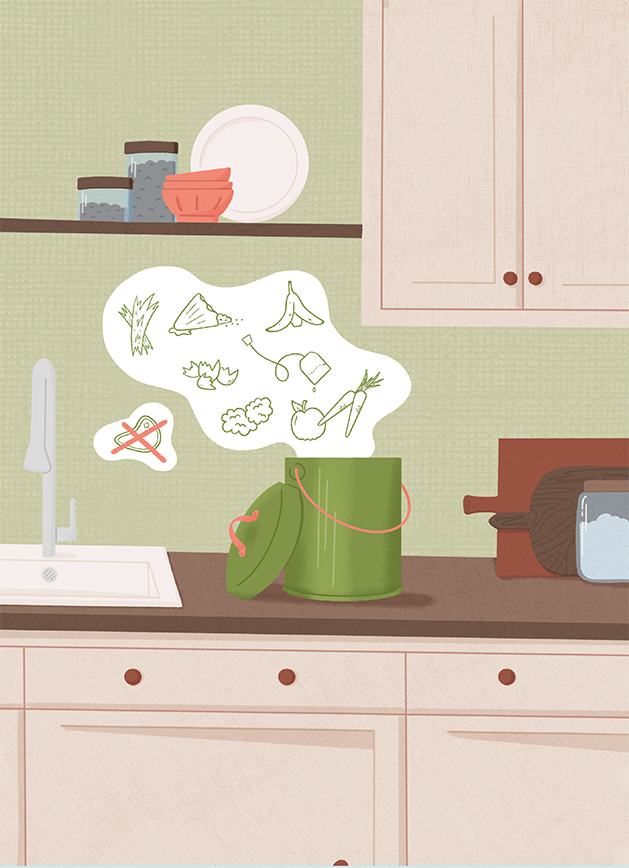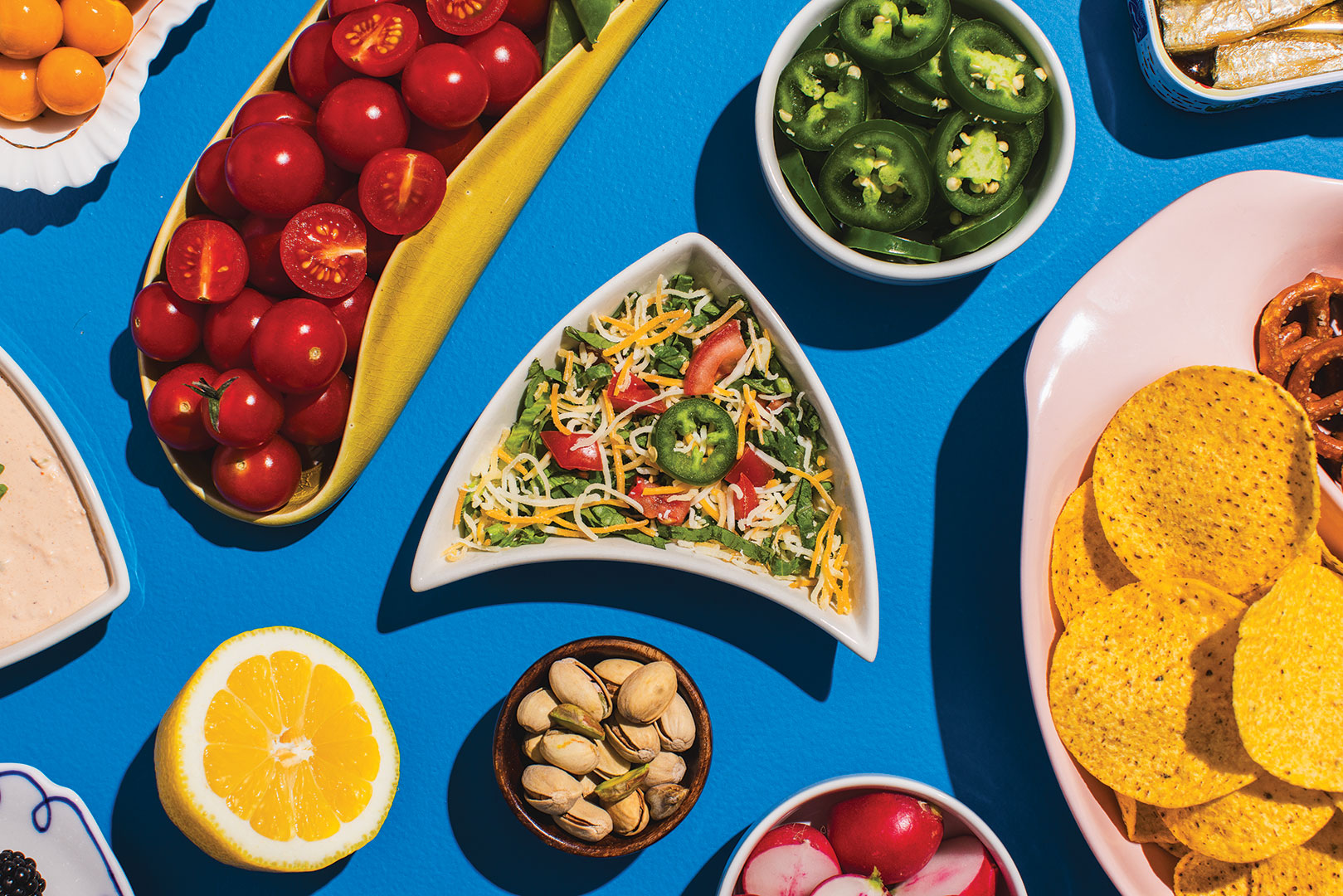
Artist: Em Handy
Reduce your carbon footprint and better your garden.
When I first began composting, I grabbed an ordinary trash can and composting bags from my local grocer, placed the bin under the kitchen sink and began composting my food and plant scraps. Though I had good intentions—after all, I am looking to reduce my carbon footprint—I was left with gnats, coffee and food drippings and a foul smell around my home. After purchasing a proper composting bin, doing a bit of research and chatting with Jamie Giesen, environmental resource supervisor with the Washington County Department of Public Health and Environment, I have discovered some tips and tricks to composting.

Why is it important for Woodbury and Washington County to compost?
Jamie Giesen: Organic material (food scraps and non-recyclable paper) makes up 25–35 percent of what we throw away. When you compost, whether backyard or through a food scraps drop-off program, your food waste and non-recyclable paper products are recycled, which helps protect the environment and recovers value from waste … Compost is a valuable resource that improves soil, reduces erosion and decreases the need for fertilizers.
What is Minnesota’s recycling goal?
Minnesota [has] a goal of recycling 75 percent of our waste by 2030 … [It] is crucial to accomplishing broader waste management goals.
Does Washington County have compost programs?
Compost bin sales are supported by the Recycling Association of MN and offered year-round for contactless pickup at the Washington County Environmental Center … The compost bins are made from 100 percent recycled material [and] are used for backyard composting, which allows residents to compost certain food scraps and yard waste at home.
The other composting option we offer Washington County residents is the food scraps drop-off program. This program allows residents to sign up for a free starter kit to start collecting food scraps at home, where they then bring bagged food scraps to a drop-off location [and] the material will be sent to a commercial compost facility.
Additional supplies of compostable bags are located at all drop-off sites, so residents grab replacement bags when they drop off to continue collection. Since the process at a commercial compost facility is different than backyard composting, this program does accept meat, bones and dairy, along with some other non-recyclable paper items including paper towels, napkins and pizza boxes.
What has the impact looked like?
Over the past three years, we’ve sold [an average of ] 379 bins per year. Many residents compost at home with homemade or store-bought compost bins … The food scraps drop-off program has been operating for two years and we’ve had over 2,500 residents sign up for a starter kit.
We have diverted 285,000 pounds of food scraps away from the trash
Compost vs. Fertilizer
Whether you are a beginner gardener or an avid green thumb, the difference between compost and fertilizer may be perplexing. Both can lead to healthy plant growth—inside and outside—but there are key differences between the two.
Compost is decaying organic substance, including dead grass, twigs and branches, fruit and vegetable waste, coffee grounds, eggshells, dryer lint, etc. Typical fertilizer is natural and synthetic materials made up of nitrogen, phosphorus, potassium compounds and manure.
Though both compost and fertilizer will lead to healthy plant growth, there is a major difference between the two. Here is an easy way to remember the key difference: Compost feeds the soil, while fertilizer feeds the plants.
Before adding compost to your favorite houseplants or your bountiful garden, remember to research each plant to see what it can withstand. The most popular compost to add to houseplants includes coffee grounds (my personal favorite!) and drippings, tea, egg and nut shells, banana and orange peels.
Common Compost
Though dead grass, twigs, fruit and veggies all make good compost, common household goods are compostable and can be used to promote healthy houseplants. Here are a few things you might just have around your house to better your plants:
• Cardboard
• Cotton rags
• Newspaper and shredded paper
• Houseplant trimmings
• Dryer and vacuum cleaner lint
• Fireplace ash
• Pet fur






















